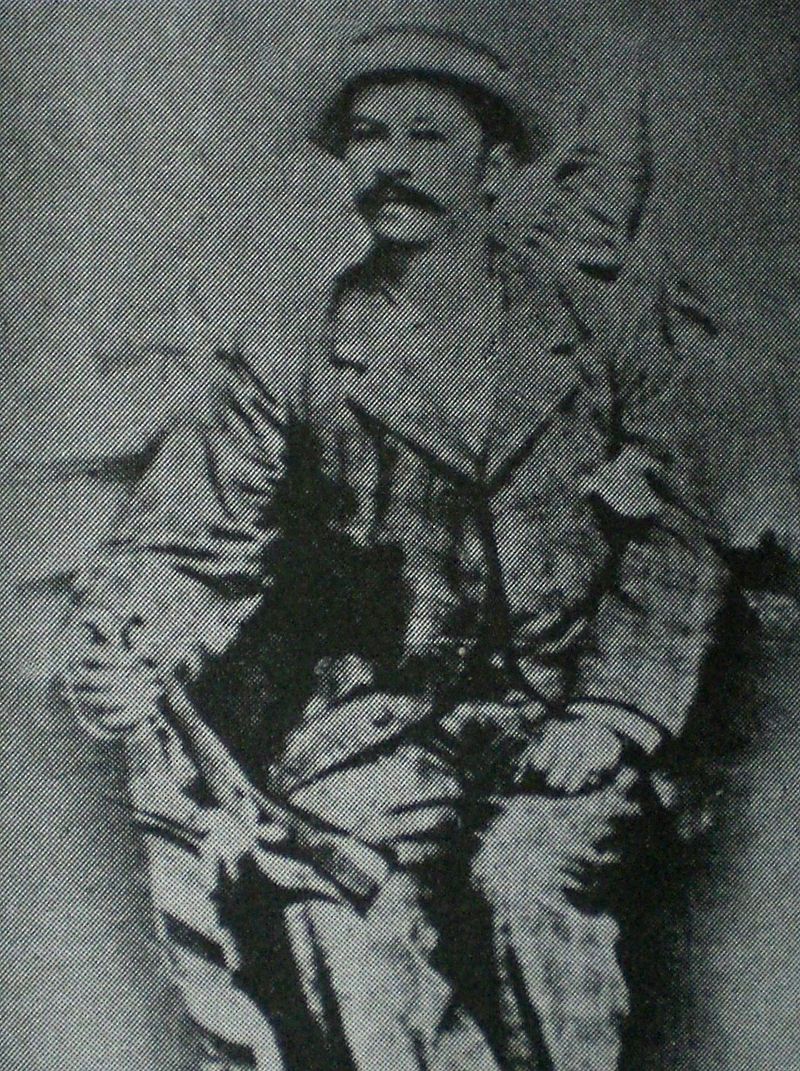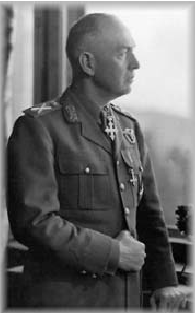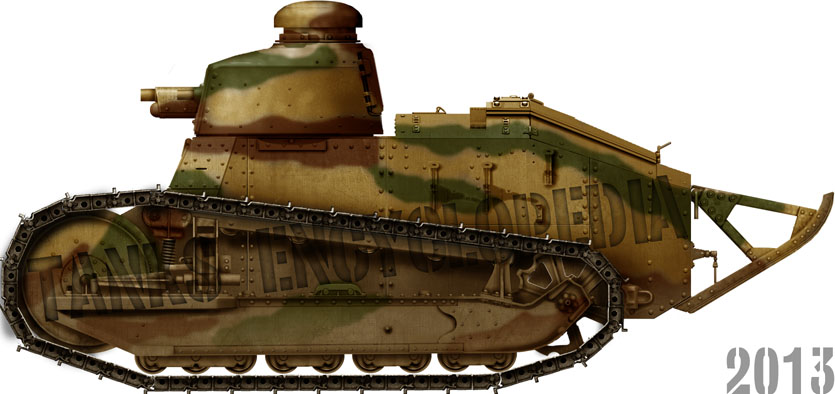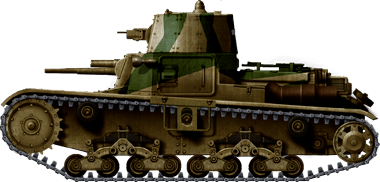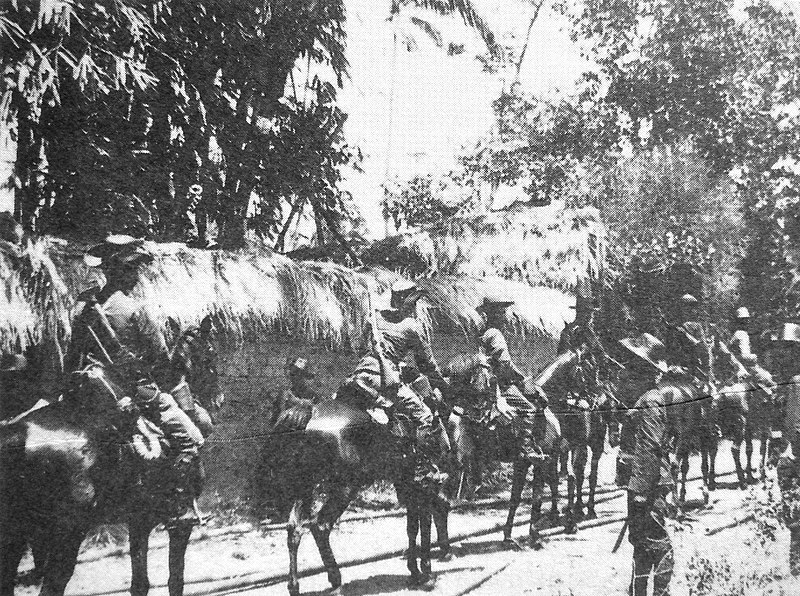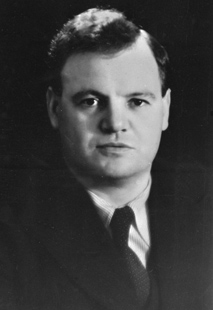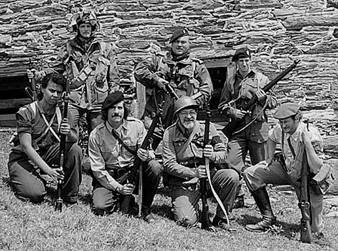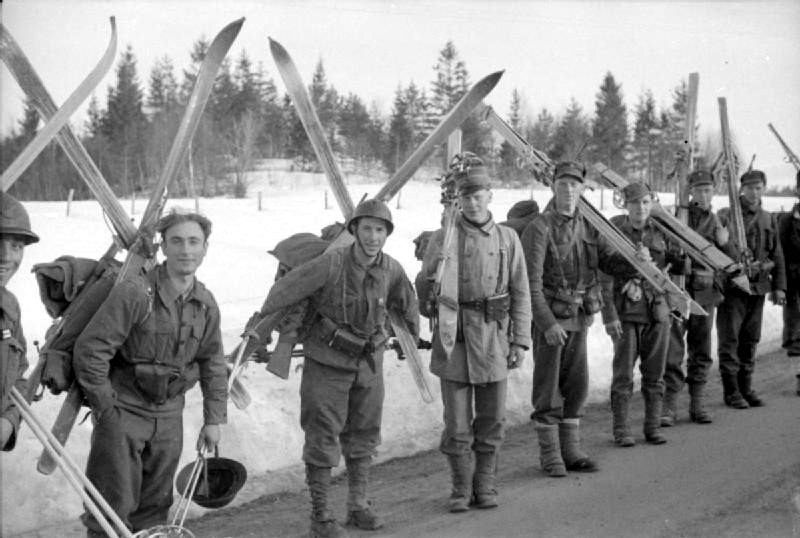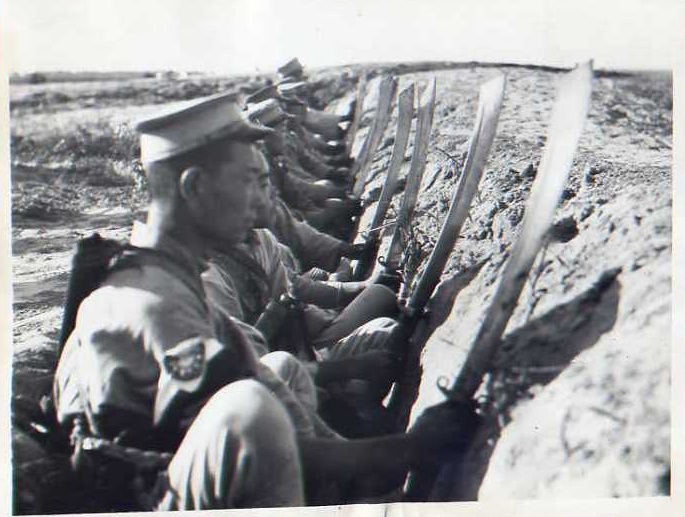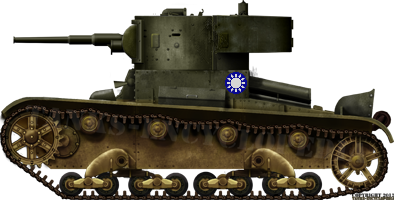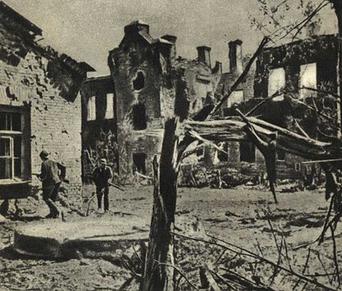The 6 February 1934 crisis: the Marco Polo sheep tries to kill the bear
The 6 February 1934 crisis: the Marco Polo sheep tries to kill the bear
As the Nasist government penetrated more and more into the lives of the various people of Russia, and as various attacks on the various Asian populations in the Imperya continued, several organizations begin to born to contrast the violence of the regime. Many organizations operated underground, without the Nasist realizing it. Others were supported in rural areas where the Nasist government wasn't as popular as in the cities. However, after the creation of several Russian racial laws that had the objective of containing the Asians in special areas, many of them decided that enought was enought, and that action was to be taken.

Inhabitants of Central Asia manifesting against the Nasist government
The Nasist government had always repressed the various Central Asian populations, leading to several scandals that agered the people to the point they wanted independence. Many independist movement took advantage of several of these scandals, such as the Erdeli Larissa affair, in which a Nasist sympathized accused of murder and with obvious proof of her crime was scagionated, and a Tajik man, Babak Mani, was considered guilty even if there were no proof of the murder.
Other scandals included the requisition of several shops and corps of Tajik men in Külob in favour of Nasist citizens. The tipical problem was the favoritism of Russians, particurally Nasist members, over other populations. On top of that, the creations of the Lageyra's wasn't helping the situation, as more and more Asians were sent there as time passed. Althought not as numerous in numbers as the ones that will come in the future, they were altready causing damages for the various Asian ethniticies, alongside others that weren't considered worthy by the Nasist, especially Jews.
Since 9 January, thirteen demonstrations had already taken place in Dushanbe, all repressed in blood. While the independists were trying to use the various scandals and the Nasist actions in the area, they also took advantage of some of their themes, taken from the Nasists themselves: antislavism, xenophobia, hostility toward the orthodox churc, and anti-Stalinism. All the manifestants in the various riots were always arrested and sent into Lageyra's in Siberia and in Russian Europe, with no mercy toward them.
However, it was the murder of nationalist Salar Fardad that triggered the indipendists movements the most. Salar, who was openly anti-Nasist, was relatively rich as he managed to keep large quantities of land from the Nasists, and was keen on funding anti-Russian movements, which were common in the streets of Dushanbe. On January 27 he was murdered by a member of the NKVD (Nasistskiy Komissariat Vnutrennikh Del, in english known as Nasist Commissariat for Internal Affairs) in his house, with the rest of his family being sent into a lageyra in Siberia. This was considered unacceptable for the Tajik people, who started to organize a massive riot against the Russian government in Tajikistan.

Salar Fardad house today.
Anti Russian and Anti Nasists leagues had been the main activists during the January 1934 demonstrations. Although revolts against the Russians in Central Asia were not a new phenomenon, they played an important role following Stalin rise to power, in particular when he consolidated his powers, but had maintanied a secret status up to now. Along them we see:
-Amalijoti Toçik(Tajik Action). Among the most important right-wing leagues present on 6 February, the oldest one was the independist Amalijoti Toçik. Founded in 1920 by Ibrahim Bek, it was composed of 60,000 members eager to overturn the Dunjoi iqtisod(Mad bears), as they called the Nasists, in order to create a Tajik state, but wanted to remain independent from the other Central Asian states. The Amalijoti Toçik had its youth group and main centre in Dushambe.
-Çavononi patriot ("Patriot Youth") had been founded by Jahanshah Farhad in 1924. With 90,000 members, including 1,500 "elites" members, it claimed for the creation of Turkestan. The Çavononi patriot had close link with many Afghan nationalists in the border, and boasted several of them in their ranks.
-Toçikistoni şarif ("Tajik Solidarity"), founded in 1933 by several members of the Amalijoti Toçik which separated from the branch, had no precise political aims and few members.
-Sangrū (Iron Sabrer). The Sangrū had been created in 1926 as an anti secret Nasist organization. The most important league by membership numbers, it had extended its recruitment in 1931 to other categories of the population under Mohammed Alim Khan. Like the other leagues, they also had "combat" and "self-defense" groups, called "Çangho". Although many communist organization accused it of having become a fascist movement, historians state that Mohammed Alim Khan reluctance to participate in a revolution was the reason behind the following massacre of Tajik populations.

Ibrahim Bek, leader of Amalijoti Toçik
On the night of 6 February, the leagues, which had gathered in different places in Dushanbe, all converged on the newly funded Stalin's Park, located in front of the Russian Assembly in Tajikistan, but on the other side of the Varzob river. The police and guards managed to defend the strategic bridge in the district, despite being the target of all sorts of projectiles. Some rioters were armed, and the police fired on the crowd. Disturbances lasted until 2:30 AM. 16 people were killed and 2,000 injured, most of them members of the Amalijoti Toçik.
Indipendist organisations had the most important role in the riots; most of the Sangrū members avoided the region of the riots, creating some incidents near the Russian Palace of Culture in Central Asia. However, Communists may have been involved; one public notice afterward attacked several members of the Nasist party, protected with several members of the ZE(Zashchitnaya eskadril'ya, also known as Protection Squad). The rioters, who shouted "Down with the robbers, long live Tajikstan!", were all killed by the ZE.
The American journalist John Gunther wrote in 1940 that the Sangrū "could easily have captured the Nasists members. But [Mohammed Alim Khan] held his men back.
Russian reaction was swift and violent, with the use of planes, tanks and other bellic weapons to dispose of the rioters. The situation was calmed quickly, with Russian repressation being extremely violent.

Fires in Dushanbe during time of the Nasist army offensive. A picture from an airplane.
Further violent actions were taken by the Nasists government, as even more Lageyra's were built in Central Asia. By many, this was considered the last time the Russian could have created favourable conditions for Asians in their land. Instead, many of them mass migrated in China and Afghanistan, to try to escape from the Nasist tyranny. Alongside them there were also several Jews, who weren't treated better at all.
I hope you guys like this new update! Be sure to like(if you like it), comment(please comment so I can learn what your opinion is) and.....follow I guess.
As the Nasist government penetrated more and more into the lives of the various people of Russia, and as various attacks on the various Asian populations in the Imperya continued, several organizations begin to born to contrast the violence of the regime. Many organizations operated underground, without the Nasist realizing it. Others were supported in rural areas where the Nasist government wasn't as popular as in the cities. However, after the creation of several Russian racial laws that had the objective of containing the Asians in special areas, many of them decided that enought was enought, and that action was to be taken.

Inhabitants of Central Asia manifesting against the Nasist government
The Nasist government had always repressed the various Central Asian populations, leading to several scandals that agered the people to the point they wanted independence. Many independist movement took advantage of several of these scandals, such as the Erdeli Larissa affair, in which a Nasist sympathized accused of murder and with obvious proof of her crime was scagionated, and a Tajik man, Babak Mani, was considered guilty even if there were no proof of the murder.
Other scandals included the requisition of several shops and corps of Tajik men in Külob in favour of Nasist citizens. The tipical problem was the favoritism of Russians, particurally Nasist members, over other populations. On top of that, the creations of the Lageyra's wasn't helping the situation, as more and more Asians were sent there as time passed. Althought not as numerous in numbers as the ones that will come in the future, they were altready causing damages for the various Asian ethniticies, alongside others that weren't considered worthy by the Nasist, especially Jews.
Since 9 January, thirteen demonstrations had already taken place in Dushanbe, all repressed in blood. While the independists were trying to use the various scandals and the Nasist actions in the area, they also took advantage of some of their themes, taken from the Nasists themselves: antislavism, xenophobia, hostility toward the orthodox churc, and anti-Stalinism. All the manifestants in the various riots were always arrested and sent into Lageyra's in Siberia and in Russian Europe, with no mercy toward them.
However, it was the murder of nationalist Salar Fardad that triggered the indipendists movements the most. Salar, who was openly anti-Nasist, was relatively rich as he managed to keep large quantities of land from the Nasists, and was keen on funding anti-Russian movements, which were common in the streets of Dushanbe. On January 27 he was murdered by a member of the NKVD (Nasistskiy Komissariat Vnutrennikh Del, in english known as Nasist Commissariat for Internal Affairs) in his house, with the rest of his family being sent into a lageyra in Siberia. This was considered unacceptable for the Tajik people, who started to organize a massive riot against the Russian government in Tajikistan.

Salar Fardad house today.
Anti Russian and Anti Nasists leagues had been the main activists during the January 1934 demonstrations. Although revolts against the Russians in Central Asia were not a new phenomenon, they played an important role following Stalin rise to power, in particular when he consolidated his powers, but had maintanied a secret status up to now. Along them we see:
-Amalijoti Toçik(Tajik Action). Among the most important right-wing leagues present on 6 February, the oldest one was the independist Amalijoti Toçik. Founded in 1920 by Ibrahim Bek, it was composed of 60,000 members eager to overturn the Dunjoi iqtisod(Mad bears), as they called the Nasists, in order to create a Tajik state, but wanted to remain independent from the other Central Asian states. The Amalijoti Toçik had its youth group and main centre in Dushambe.
-Çavononi patriot ("Patriot Youth") had been founded by Jahanshah Farhad in 1924. With 90,000 members, including 1,500 "elites" members, it claimed for the creation of Turkestan. The Çavononi patriot had close link with many Afghan nationalists in the border, and boasted several of them in their ranks.
-Toçikistoni şarif ("Tajik Solidarity"), founded in 1933 by several members of the Amalijoti Toçik which separated from the branch, had no precise political aims and few members.
-Sangrū (Iron Sabrer). The Sangrū had been created in 1926 as an anti secret Nasist organization. The most important league by membership numbers, it had extended its recruitment in 1931 to other categories of the population under Mohammed Alim Khan. Like the other leagues, they also had "combat" and "self-defense" groups, called "Çangho". Although many communist organization accused it of having become a fascist movement, historians state that Mohammed Alim Khan reluctance to participate in a revolution was the reason behind the following massacre of Tajik populations.

Ibrahim Bek, leader of Amalijoti Toçik
On the night of 6 February, the leagues, which had gathered in different places in Dushanbe, all converged on the newly funded Stalin's Park, located in front of the Russian Assembly in Tajikistan, but on the other side of the Varzob river. The police and guards managed to defend the strategic bridge in the district, despite being the target of all sorts of projectiles. Some rioters were armed, and the police fired on the crowd. Disturbances lasted until 2:30 AM. 16 people were killed and 2,000 injured, most of them members of the Amalijoti Toçik.
Indipendist organisations had the most important role in the riots; most of the Sangrū members avoided the region of the riots, creating some incidents near the Russian Palace of Culture in Central Asia. However, Communists may have been involved; one public notice afterward attacked several members of the Nasist party, protected with several members of the ZE(Zashchitnaya eskadril'ya, also known as Protection Squad). The rioters, who shouted "Down with the robbers, long live Tajikstan!", were all killed by the ZE.
The American journalist John Gunther wrote in 1940 that the Sangrū "could easily have captured the Nasists members. But [Mohammed Alim Khan] held his men back.
Russian reaction was swift and violent, with the use of planes, tanks and other bellic weapons to dispose of the rioters. The situation was calmed quickly, with Russian repressation being extremely violent.

Fires in Dushanbe during time of the Nasist army offensive. A picture from an airplane.
Further violent actions were taken by the Nasists government, as even more Lageyra's were built in Central Asia. By many, this was considered the last time the Russian could have created favourable conditions for Asians in their land. Instead, many of them mass migrated in China and Afghanistan, to try to escape from the Nasist tyranny. Alongside them there were also several Jews, who weren't treated better at all.
I hope you guys like this new update! Be sure to like(if you like it), comment(please comment so I can learn what your opinion is) and.....follow I guess.


